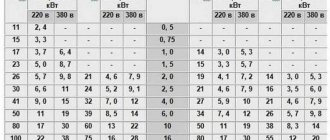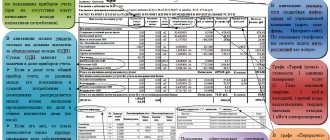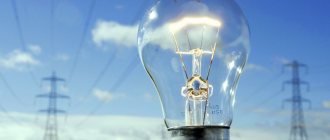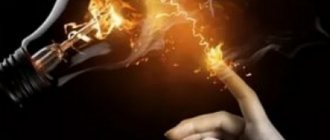When and how was it opened
The history of the discovery of this phenomenon was very long.
The word itself was invented by the Greek scientist Thales. It became a derivative of the concept “electron”, which is translated as “amber”. This term appeared before our era, thanks to Thales, who noticed the property of amber, after rubbing it, to attract light objects. This happened seven centuries BC. Thales conducted many experiments, studying what he saw. These were the first experiments with charges in the world. This was where his observations ended. He was unable to advance further, but it was this scientist who is considered the founder of the theory of electricity , its discoverer, although this phenomenon was not developed as a science. His observations were forgotten for a long time, without arousing interest among scientists.
This is interesting! Einstein's special theory of relativity: briefly and in simple words
When did electricity appear and who discovered it in Russia?
Among the inhabitants of the planet, it is difficult to find those who have no idea about electricity. But those who know when and who discovered electricity, what it consists of, and who made an important and useful discovery for humanity are few. Therefore, it is worth understanding what electrical phenomena are and to whom we owe their discovery. ...
- When and how was it opened
- First experiments
- History of discovery
- First experiments with electricity
- Phenomena in nature associated with electricity
- When did electricity appear in Russia?
First experiments
In the middle of the 17th century, Otto Guericke began a scientific study of Thales' observations. A German scientist designed the first device in the form of a rotating ball, which he fixed on an iron pin.
After his death, other scientists continued their research:
- German physicists Bose and Winkler,
- Englishman Hawkesby.
They improved the device invented by Henrik and discovered some other properties of the phenomenon. The first experiments carried out using this apparatus served as an impetus for new inventions.
History of discovery
The theory of electricity was further developed several centuries later. The theory was created by W. Hilbert, who became interested in such phenomena.
At the beginning of the 18th century, it was proven that the electricity produced by friction of different materials varies. And in 1729, the Dutchman Muschenbroek discovered that if a glass jar is sealed on both sides with staniol leaves, electricity will accumulate there.
This phenomenon is called the Leyden jar .
Important! ScientistB. Franklin was the first to suggest that there are positive and negative charges.
He was able to explain the Leyden jar process, proving that the lining of the jar can be “forced” to become electrified by charges of different signs. Franklin studied atmospheric electrical phenomena. Almost simultaneously with him, similar research was carried out by the Russian physicist G. Richman and the scientist M.V. Lomonosov. At the same time a lightning rod was invented , the action of which was explained by the occurrence of a voltage difference.
A. Volt (1800) created a galvanic battery, composing it from round silver plates, between which he placed paper pieces soaked in salt water. A chemical reaction inside the battery produced an electrical charge.
The beginning of 1831 was marked by the fact that Faraday created an electric generator, the operation of which was based on the law of electromagnetic induction discovered by this scientist.
Many electrical devices were created by the famous scientist Nikola Tesla in the 20th millennium. The main events in the development of electricity can be summarized in the following chronological order:
- 1791 - scientist L. Galvani discovered the movement of charges along conductors, i.e. electricity,
- 1800 – A. Volt introduced the current generator,
- 1802 - Petrov discovered the electric arc,
- 1827 - J. Henry designed wire insulation,
- 1832 - member of the St. Petersburg Academy Schilling showed an electric telegraph,
- 1834 - academician Jacobi created an electric motor,
- 1836 - S. Morse patented the telegraph,
- 1847 - Siemens proposed a rubber material for insulating wires,
- 1850 - Jacobi invented the direct-printing telegraph,
- 1866 - Siemens proposed a dynamo,
- 1872 - A.N. Lodygin created an incandescent lamp using a carbon filament,
- 1876 - the telephone was invented
- 1879 - Edison developed an electric lighting system still in use today.
- 1890 marked the start of the relatively widespread use of electrical appliances in everyday life,
- 1892 - the first household appliances used by housewives in the kitchen appeared,
The list of discoveries can be continued. But they were all already based on the previous ones.
First experiments with electricity
The first experiments with charges were carried out in 1729 by the Englishman S. Gray. During these experiments, the scientist established: not all objects transmit electric charge . From mid-1833, the Frenchman C. Dufay began serious research in this area of science. Repeating the experiments of Thales and Gilbert, he confirmed the existence of two types of charge.
Important! At the end of the 18th century, a new era of scientific achievements began. Russian V. Petrov discovered the “Volta Arc”. Jean A. Nollet designed the first electroscope, which later served as the prototype of the electrocardiograph. And the year 1809 was marked by an important discovery: the English scientist Delarue invented the first incandescent light bulb, which gave impetus to the industrial application of the open laws of physics.
Dopetrovskaya Moscow
It is not surprising that the dandies of the late 19th century found themselves in an awkward situation, because even at the beginning of the century, at most balls, according to eyewitnesses, due to poor lighting, “it was impossible to recognize each other from one end of the hall to the other.” On the streets the situation was far from better, although even the mere presence of lanterns was perceived as progress, since until 1730 the city was illuminated only by candles placed by residents on the windows.
Pre-Petrine Moscow lived, checking its rhythms with the sunlight, waking up in the summer with the first rays, and in the fall and winter - before sunrise thanks to the ringing of bells that called people to the morning service. At night, the city gates were closed, and movement around the city was allowed only with a lamp in hand, without which the guards detained passers-by. This measure was not unnecessary, since robberies and murders often occurred at night.
Another major problem of the time was fires, which often destroyed large parts of the city due to highly flammable wooden buildings. A preventive measure to combat uncontrolled fire was a ban on the use of home baths and the firing of stoves in houses and mills in the summer.
In addition, there was a special fire brigade made up of lower servants of the order - yaryzheks, who, as a rule, did not extinguish so much as they were involved in localizing the fire, breaking down the buildings closest to it so that the flame did not spread further.
Phenomena in nature associated with electricity
Nature is rich in electrical phenomena. Examples of such phenomena that are associated with electricity are the northern lights, lightning, etc.
Northern lights
The upper layers of the air shell often accumulate small particles arriving from space. Their collision with the atmosphere and dust causes a glow in the sky, which is accompanied by flashes. This phenomenon is observed by residents of polar regions. This phenomenon was called the aurora borealis . The northern glow sometimes lasts for several days, shimmering in different colors.
Lightning
Moving with atmospheric currents, cumulus clouds cause friction between droplets and ice crystals. As a result of friction, charges accumulate in the clouds. This leads to the formation of giant sparks between the clouds and the ground. This is lightning. They are accompanied by peals of thunder.
The accumulation of electrical charges in the air sometimes causes the formation of small glowing balls or large sparks. These balls and sparks are called ball lightning. They move with the air, exploding on contact with individual objects. Such lightning often causes burns and death of living beings and people, and fire of objects. Scientists cannot yet accurately explain the reasons for the appearance of lightning.
St. Elmo's Fire
This is the name for a phenomenon familiar to sailors sailing on sailboats since ancient times. They rejoiced when they saw the glow of the masts in bad weather. The sailors believed that the lights testified to the patronage of St. Elmo.
The glow can be observed in a thunderstorm on high spiers. The lights look like candles and brushes in a blue or light purple hue. The length of these lights sometimes reaches a meter. The glow is sometimes accompanied by a hissing or a soft whistle.
The sailors tried to break off part of the mast along with the fire. But this was never successful, since the fire “flowed” onto the mast and rose up it. The flame is cold, it does not ignite, it does not burn your hands. And it can burn for several minutes, sometimes for about an hour. Modern scientists have established that these lights are electrical in nature.
How did the electrification of Russia begin?
The majority of the adult population of Russia and other countries of the former USSR today fortunately know that large-scale electrification of the country is associated with the implementation of the State Electrification of Russia (GoElRo) plan adopted in 1920.
In fairness, it should be noted that the development of this plan dates back to the time before the First World War, which, in fact, then prevented its adoption. This article will focus on the period preceding it, when electricity was just entering the everyday life of the population of large cities, and was an admirable curiosity, a symbol of omnipotent Progress.
It seems that many readers will be surprised, but even today in the old houses of Zamoskvorechye you can find working electrical wiring laid at the turn of the 80-90s of the 19th century during the first electrification of Moscow. However, the events associated with this action were also not the first milestone on the path of the victorious march through the territory of the then Russian Empire of the new driving force. When determining the time of the beginning of the existence of any phenomenon, difficulties and discrepancies always arise, however, we will designate 1879 as the beginning of the era of electricity in Russia.
So, it was this year that the Liteiny Bridge in St. Petersburg was illuminated with electric light, becoming the first bridge in the world illuminated using electricity. Connected with this event is a curious story about how the St. Petersburg City Government sold the monopoly on street lighting to private companies that lit them with oil and gas lamps. The Liteiny Bridge, as it was built after the conclusion of this agreement, was not subject to the agreement; as a result, the electrification of the Russian capital and the empire as a whole began with the bridge. 1. Liteiny Bridge. Start of construction: August 30, 1875. Opening: September 30, 1879.
2. View of Liteiny Bridge from Kutuzov Embankment, June 2007.
A year earlier, in 1878, engineer Borodin carried out the electrification of the turning shop of the Kyiv railway workshops, during which the workshop was illuminated by four electric arc lamps. We know about this fact, but it was not chosen as the initial date due to its narrow departmental significance and the inaccessibility of viewing this miracle to the general public.
The next milestone on the path to introducing new products into everyday life was January 30, 1880, when the electrical engineering department of the Russian Technical Society was founded, designed to oversee the problems of electrification in Russia. In the same year, work began on lighting the streets of Moscow and St. Petersburg, but their volume can be considered extremely insignificant - a couple of hundred lamps for the two capitals. Also in the same year, in Kyiv, the workshops of the Dnieper Shipping Company were illuminated using Yablochkov lamps.
At this stage of electrification, all consumers of electricity (which were exclusively lighting devices) used direct current, and there were certain problems with transmitting electricity over significant distances. As a result, the source of electricity was located in close proximity to the consumer. So, for example, in the case of the Kyiv railway workshops, each of the four lamps had its own electromagnetic Gram machine.
Exactly two years after the coronation of Emperor Alexander III in St. Petersburg, celebrations on a similar occasion in Moscow on May 15, 1883 were marked by grandiose illumination of the Kremlin. To implement this project, a special power station was built on Sofia Embankment.
3. “Illumination of the Kremlin”, 1883, artist Alexey Petrovich Bogolyubov
In the same year, but already in the capital of the Empire, it illuminates the central street of the city, and a little later the Winter Palace is electrified. According to some data, it is precisely for the implementation of these measures that perhaps the first, more or less large power plant in Russia, with a capacity of 35 kW, is being built. Among other things, this power plant is notable for the fact that it was located on a barge moored to the Moika embankment not far from the Police Bridge. 4. Winter Palace, 1752
5. Winter Palace from Dvortsovy Proezd, 2012
There are no further references to any major events related to electricity for a number of years, until in 1886 it becomes known about the lighting of the Chateau de Fleurs park in Kiev (now Dynamo Stadium) with electricity.
On July 31, 1887, the Electric Lighting Society, founded by Karl Fedorovich Siemens (who by that time had accepted Russian citizenship and became a merchant of the first guild), decided to begin work aimed at the practical electrification of Moscow. The implementation of these ambitious plans began with the installation of electric lighting for the Postnikovsky passage on Tverskaya, now the Theater named after. Ermolova.
In general, the “Electric Lighting Society of 1886”, whose charter was approved on July 4, 1886 by the highest Decree of Emperor Alexander III, played a huge role in the initial electrification of Russia. After the revolution of 1917, the nationalized capacities of this enterprise were combined into a single energy system, on the basis of which, in particular, JSC MOSENERGO in Moscow now operates.
On February 3, 1888, a land lease agreement was concluded in Moscow for the construction of the first central city power plant. The power plant, called Georgievskaya (located on the corner of Bolshaya Dmitrovka and Georgievsky Lane) generated direct current and supplied electricity to consumers (including private homeowners) within a radius of one and a half miles. All cables were laid in brick channels. 6. Georgievskaya power station, Moscow, 1902
At this time, in addition to the Central one, a number of smaller power plants were operating in Moscow - Gorodskaya, which illuminated the Stone Bridge and the square of the Cathedral of Christ the Savior, Universitetskaya, Imperial Theaters, Dvortsovaya (illuminated the Kremlin), at the Yaroslavl and Brest stations. Things were approximately the same in the other two largest cities of the empire - St. Petersburg and Kyiv. The use of direct current limited the length of power cables, forcing the use of small local power plants. 7. Machine room. Raushskaya embankment power plant, Moscow, 1911
On July 3, 1892, the first electric tram in Russia was launched in Kyiv; the line had a length of one and a half kilometers. The power of the power supply plant was 30 kW. 8. The first electric tram in the Russian Empire, 1892
The year 1895 was marked by the commissioning of Russia's first hydroelectric power station on the Bolshaya Okhta River in St. Petersburg, with a rather large capacity for those times - 300 kW. In the same year, the Administration of the Vladikavkaz Railway built and put into operation the White Coal hydroelectric station on the Podkumok River, between Kislovodsk and Essentuki, which provided electricity for lighting resorts. 9. HPP “White Coal” (Pyatigorsk HPP)
The electrification of Russia at that time was not of a planned, centralized nature, so the milestones given are not a complete list of all measures to electrify the country. The houses of wealthy homeowners installed their own sources of electricity, sometimes quite powerful, and the same was observed in agriculture and estate land ownership, but such events rarely made it to the pages of newspapers, and accordingly we know little about them.
An important event during the period of the beginning of the electrification of the country was the construction and commissioning of a power station on Raushskaya embankment, the first truly large power station in Russia, and, moreover, generating three-phase alternating current. This made it possible to transmit power over long distances using higher voltage. On April 28, 1897, the installation of electrical equipment began, and in November of the same year the power plant was launched. At that time, the power of this steam turbine power plant was 1470 kW (already during the First World War, in 1915, the second stage of this power plant with a capacity of 21 MW was launched).
The oldest household lighting wiring that has survived to this day in Moscow was apparently powered precisely from this power plant. Consumers received alternating current with a frequency of 50 Hz. The household power supply voltage was 127 V.
Over time, a situation arose when electric trams, which appeared in Moscow at the beginning of the 20th century, began to consume most of the electricity generated by the Raush power plant. To relieve it, in 1907, a power plant was built near the Maly-Kamenny Bridge to power the tram network. Its power at the time of launch was 6000 kW. 10. The first power plant in Kursk. Photo from 1901
Some dates to some extent characterize the spread of a new energy source across the country:
1901 - the first power plants were launched in Kursk and Yaroslavl. 1908 - the first power plant in Chita came into operation. 1912 – commissioning of a power plant in Vladivostok. 1912-14 – construction and launch of the world’s largest peat thermal power plant “Electroperedacha” near the city of Bogorodsk (now Noginsk). 1915 is the date from which the Moscow Electric Lamp Plant begins its history. And so on…
The result of the pre-war development of the Russian electric power industry was the achievement of a total installed capacity of electricity sources of 1,100 MW and a production of 1,900,000 MWh per year (data from 1913). As for hydroelectric power plants, by 1917 in Russia they had a total capacity of about 19 MW, and the most powerful hydroelectric power station in the empire was the Hindu Kush - 1.35 MW.
11. Turbine room of the Hindu Kush hydroelectric power station with a capacity of 1.35 MW on the river. Murghab (Turkmenistan).
Its construction was completed in 1909 (photo of 1911, by Prokudin-Gorsky)










